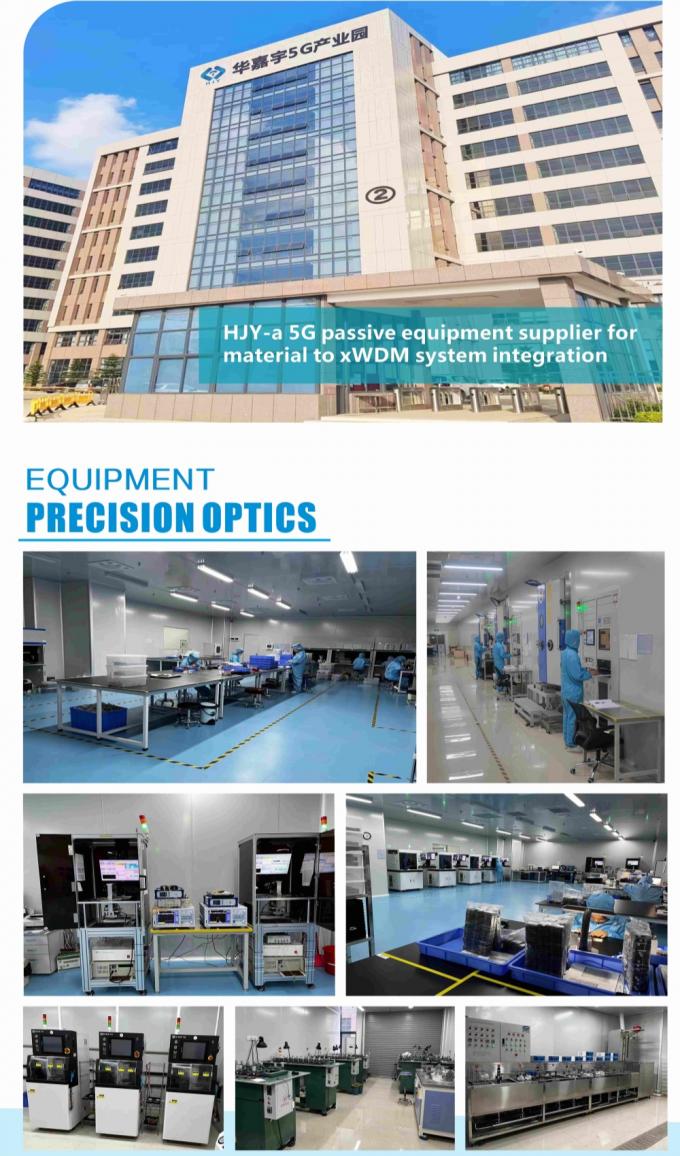

Huajiayu, the pioneering force in passive optical and optical transport products, today announced the launch of its new CCWDM Multiplexer. The CCWDM MUX box is designed to provide precise synchronization and deterministic communication for 5G and its control systems.

With the rapid advancement of technology, the demand for high-speed and reliable communication has significantly increased. Fiber optic communication and the 5G industry have emerged as key players in meeting this demand. China, with its massive domestic mobile market, has become a focal point for the development and growth of these industries. In this article, we will explore the opportunities and challenges that the development of fiber optic communication and the 5G industry face in China.
The 5G Construction Environment Showing a Trend towards "Optical Communication"
The construction of 5G networks is witnessing a shift towards "optical communication." This trend is driven by the need for higher bandwidth and lower latency, which can be effectively achieved through fiber optic communication. With the deployment of 5G networks, the demand for fiber optic cables, transceivers, and other related components has surged. This presents a significant opportunity for the development and growth of the fiber optic communication industry in China.
The Massive Domestic Mobile Market Offers Great Potential for Increasing the Value-added of Products
China boasts the largest mobile market in the world, with billions of mobile phone users. This massive market provides an excellent opportunity for companies in the fiber optic communication and 5G industry to increase the value-added of their products. With the deployment of 5G networks, there will be a significant demand for high-speed internet, video streaming, and other data-intensive applications. Fiber optic communication can cater to these needs, and companies can capitalize on this opportunity to provide innovative and high-quality products to the domestic market.
Relevant Technologies are Mature, While Core Technologies Still Have Room for Further Improvement
China has made significant advancements in fiber optic communication and 5G technologies. Many of the relevant technologies, such as fiber optic cables and transceivers, are already mature and widely used. However, there is still room for improvement in the core technologies. For example, further research and development are needed to enhance the transmission capacity, reduce signal loss, and improve the overall performance of fiber optic communication systems. This presents an opportunity for companies to invest in research and development to further strengthen the industry.
Major Challenges
While there are immense opportunities, the development of fiber optic communication and the 5G industry in China also faces several challenges.
1. Continued Reliance on Imported High-End Key Components
Despite the progress made in domestic manufacturing capabilities, China still heavily relies on imported high-end key components for fiber optic communication and 5G networks. This dependence poses a challenge to the industry's growth and sustainability. To overcome this challenge, it is crucial for China to invest in research and development to develop its own high-end key components, reducing dependence on imports and ensuring a stable supply chain.
2. The Need to Enhance the Supply Chain Integrity of 5G Optical Communication Solutions
Ensuring the integrity of the supply chain is vital for the development of the 5G industry. The complexity and global nature of the supply chain pose significant challenges in maintaining security and preventing potential risks. China needs to strengthen its supply chain management, establish strict standards, and enforce regulations to protect the integrity of 5G optical communication solutions. This will help build trust among customers and create a secure environment for the industry to thrive.
3. Significant Difficulties in Emerging Technology Innovation and Industrial Transformation
While China has made remarkable progress in the development of fiber optic communication and the 5G industry, it still faces significant difficulties in emerging technology innovation and industrial transformation. The rapid pace of technological advancements requires continuous innovation to stay competitive. China needs to invest in research and development, promote collaboration between industry and academia, and encourage entrepreneurship to overcome these challenges and foster further growth in the industry.
Conclusion
The development of fiber optic communication and the 5G industry in China presents both opportunities and challenges. The trend towards "optical communication" in the 5G construction environment, the massive domestic mobile market, and the maturity of relevant technologies create a favorable environment for growth. However, challenges such as reliance on imported high-end key components, supply chain integrity, and difficulties in emerging technology innovation and industrial transformation need to be addressed. By addressing these challenges, China can position itself as a global leader in fiber optic communication and the 5G industry.
Send your inquiry directly to us